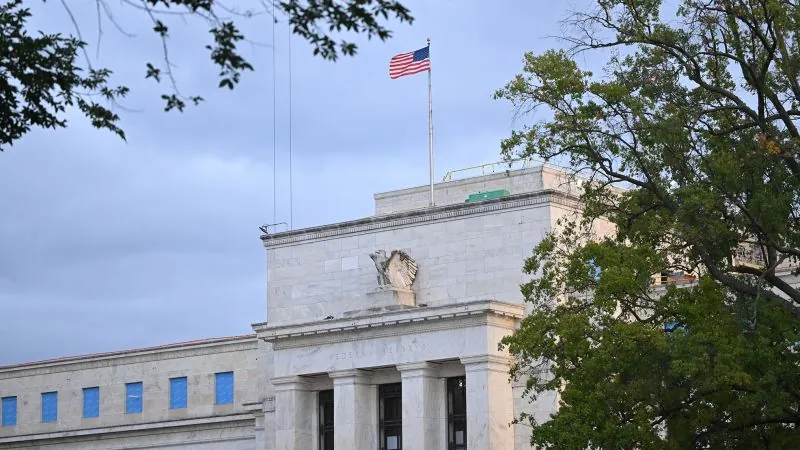
The Federal Reserve's Recent Rate Cut: Political Implications and Economic Uncertainty Ahead
2024-11-07
Author: Ying
The Federal Reserve Cuts Interest Rates
The Federal Reserve has made headlines again by cutting interest rates by a quarter point, marking its second cut since September. This decision comes at a politically charged moment, shortly after President-elect Donald Trump’s significant election victory. The timing is creating a ripple effect through the financial markets and leaving many Americans contemplating what this means for their wallets.
Tariffs on the Horizon?
Steven Mnuchin, former Treasury Secretary under Trump, indicates that there may be a reconsideration of the extensive tariffs that Trump previously promised during his campaign. Initially, Trump suggested implementing tariffs ranging from 10% to as high as 60% on certain imports, particularly from China. Economists foresee that such measures could lead to increased prices on everyday goods which could further burden consumers already grappling with inflation.
Mnuchin stressed that Trump is aware of the inflationary pressures and is likely to approach tariff decisions with caution this time around. He also mentioned that during Trump’s first term, strategic exceptions were made to accommodate certain sectors, suggesting that this tactical approach might continue if Trump returns to office.
Inflation Continues to Impact Consumers
Despite recent signs of easing inflation, many Americans remain skeptical, with Chair Jerome Powell noting that it could take years of real wage growth for the public to feel financially secure. The economy has shown positive signs, such as rising average hourly earnings and a decrease in inflation rates, but the repercussions of prior inflation still linger.
Powell acknowledged that while the labor market appears stable, there are persistent inflation risks that the Fed must navigate carefully. A balanced approach is essential; if rates are reduced too quickly, inflation may surge again, but too slow an approach could weaken job growth.
Market Reactions: A Double-Edged Sword
As the Fed cuts rates, one might expect mortgage rates to decrease; however, the opposite has happened. Recent data shows a rise in mortgage rates, which is unusual considering the Fed's efforts to lower borrowing costs. The 30-year fixed mortgage rate has increased to nearly 6.8%, compelling many potential homebuyers to rethink their plans.
The surge in mortgage rates correlates with the falling US Treasury yields and a strong US economy, compelling many investors to reassess their options in light of potential future economic policies under Trump.
What Does the Future Hold?
With the Fed projected to make further rate cuts, discussions about the economic outlook are heating up. Fed officials expect a continuing trend of cuts into 2025, but much hinges on the evolving economic landscape, particularly with Trump's potential policy shifts towards tariffs that may reinvigorate inflation.
The upcoming months will be critical. Economists predict that if inflation expectations rise, the Fed may need to adjust its course quickly. With uncertainty on the horizon surrounding Trump's economic plans, both Wall Street and Main Street must stay alert.
The Stock Market's Rollercoaster Reaction
Trump's election victory has injected a surge of confidence into the stock market, with significant gains on the day following the election. The Dow Jones surged, marking its best day since 2022, reflecting investors' optimism regarding Trump’s anticipated pro-growth policies.
Yet, as markets react positively, there’s an undercurrent of concern regarding how sweeping tariffs might affect long-term growth and inflation, leading to a dichotomy of optimism and caution among investors.
Conclusion
In summary, the Federal Reserve's interest rate cuts point to a complex interplay between economic recovery efforts and the political landscape under a new administration. With inflation, tariffs, and market reactions all hanging in the balance, the coming months promise to be a critical period for the US economy.


 Brasil (PT)
Brasil (PT)
 Canada (EN)
Canada (EN)
 Chile (ES)
Chile (ES)
 Česko (CS)
Česko (CS)
 대한민국 (KO)
대한민국 (KO)
 España (ES)
España (ES)
 France (FR)
France (FR)
 Hong Kong (EN)
Hong Kong (EN)
 Italia (IT)
Italia (IT)
 日本 (JA)
日本 (JA)
 Magyarország (HU)
Magyarország (HU)
 Norge (NO)
Norge (NO)
 Polska (PL)
Polska (PL)
 Schweiz (DE)
Schweiz (DE)
 Singapore (EN)
Singapore (EN)
 Sverige (SV)
Sverige (SV)
 Suomi (FI)
Suomi (FI)
 Türkiye (TR)
Türkiye (TR)
 الإمارات العربية المتحدة (AR)
الإمارات العربية المتحدة (AR)